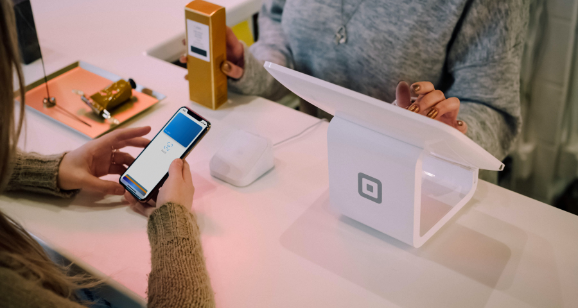Customer Loyalty Programs: The point isn’t points, it’s deeper customer relationships.
Marketers (and their agencies) are a funny bunch. We often talk about the need to stand out, to be fresh, new and disruptive. Yet, one of our industries most familiar practices is to copy the tactics and strategies we see being used by others.
Points-based loyalty reward programs are one of the best examples of this. First popularised by airline and credit card companies more than 30-years ago, they have since been replicated to touch everything from your morning coffee to your evening 29 different programs, with companies spending a staggering US$5-billion dollars on them annually.
Given their ubiquitous nature, one would assume these programs are a highly successful way to build customer relationships and increase sales. However, to-date there is little empirical evidence to support this. In-fact, a poorly executed rewards program has the potential to alienate customers, with almost 90% of social media sentiment towards these schemes negative. Furthermore, transactional programs that are adopted without sufficient strategic thought, adequate customer data and supporting technology investment can become a huge financial liability on a company’s balance sheet, with more than half of all accumulated points, at an estimated worth of US$50 billion, never actually redeemed by customers.
We’ve seen this happen here in Singapore, with Grab making forced changes to their GrabRewards points policy in 2018 after miscalculating their financial impact.
When organisations focus too heavily on points and discounts they miss an opportunity to drive deeper engagement through emotional loyalty. As highlighted in 2019 Forester Loyalty playbook "Companies that want to compete for their customers' loyalty need an evolved approach that extends beyond transactional rewards."
One industry that is acutely aware of this is the traditional mixed retail mall. With well over 100 malls in Singapore, operators have often relied on cookie-cutter everyday rewards programs to drive increased footfall. However, new malls such as Jewel and Funan typify a move to 'experiential retail', encouraging repeat in–store visits, not by free-parking and discount coupons, but by curating personalised experiences integrated across a number of digitally enabled touchpoints.
When looking to evolve, from a transactional-only based rewards program companies should keep in mind these basic principles.
- Firstly, keep it simple for the customer: With a focus on building customer relationships, simplicity is key. A fantastic example of is Fans of M.O. by Mandarin Oriental. Unlike the points-based programs used by other hotel chains, Fans of M.O. simply need to book a qualifying stay to enjoy a choice of rewards such as a room upgrade, early check-in or daily breakfast on each and every stay. Not only does this eliminate the complexity of status-based rewards that often only appeal to the most frequent of customers, but it provides Mandarin Oriental the perfect opportunity to capture and measure valuable preference data among all guests.
- Enhance the customer experience by investing in the right technology: By creating a connected technology platform, companies are able to gather an array of data-points that allow them to build comprehensive customer profiles. Even with a partial view of the customer, organisations are able to overcome one of the most commonly sighted drawbacks of traditional loyalty programs – rigid rewards frameworks that only appeal to a narrow audience. Providing personalised incentives or rewards not only enhances the customer experience but ensures that companies can drive incremental behaviours such as increased basket size or purchase frequency. A classic example of this is the cosmetic brand Sephora which, via their Beauty Insider mobile first program, are able to provide highly customized recommendations and incentives based on a customer’s profile, buying habits and quiz responses. Offers are then synchronized across all platforms to provide a true omnichannel experience. So powerful has this been for building customer relationships the brand now sees around 80% of its transactions come from loyalty program members. (Source: McKinsey).
- Successful programs are about insightful iteration and regular reinvention: As highlighted in a paper titled Is digital killing loyalty?, "Loyalty is—and always has been—a marathon. But it is now won or lost over a series of successive sprints." Organisations should take an agile approach to program evolution, adding, removing or adapting program features as they learn more about the relative impact of each. Also, by designing flexible solutions, companies can quickly adapt to rapidly changing customer expectations.
- Don't forget about the power of creativity: Yet another important, and often overlooked, consideration in launching a rewards program is the power of creativity. By its nature, loyalty marketing must be backed by the science of strategy and data, but this does not mean imagination and originality have to suffer. After all, the role of marketers is still to inspire people to do business with their organisations. This means standing out from the competition and connecting with customers via interesting mechanics, communications and rewards that align with the overall brand. Toms shoes uses their One-for-One loyalty program to support social causes, something that aligns strongly to their corporate vision "To make life more comfortable for all"
Companies that continue to see loyalty programs as "Earn and Burn" promotional vehicles are missing an opportunity to create meaningful customer relationships. Instead, by looking beyond points and utilising insightful data, appropriate technology and brand aligned creativity to deliver a connected customer experience, modern loyalty programs can drive the incremental business actions every company seeks while continuing to delight each and every member.
Written by Joshua Lee, Managing Director, Bray Leino Splash Singapore
Image credit: Christiann Koepke @ Unsplash

